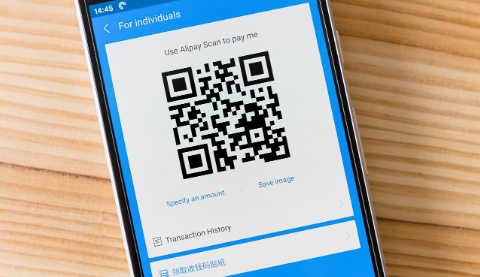
In today’s fast-paced digital world, QR codes have become an increasingly ubiquitous sight. From product packaging to advertising materials, these square-shaped patterns have revolutionized the way we interact with information. But what exactly are QR codes, and how do they work?
History of QR Codes
QR codes, short for Quick Response codes, were first created in Japan in 1994 by a subsidiary of Toyota as a means to track vehicles during manufacturing. Initially used for industrial purposes, QR codes quickly gained popularity due to their ability to store large amounts of data and their fast readability.
How QR Codes Work
QR codes work by encoding information in a two-dimensional barcode that can be easily scanned by a smartphone or QR code reader. This information can range from website URLs and contact information to text and product details. Once scanned, the encoded data is extracted and displayed to the user, allowing for quick and convenient access to information.
Benefits of QR Codes
Convenience
One of the primary benefits of QR codes is their convenience. With a simple scan of a code, users can access information instantly without the need for typing long URLs or searching for specific content.
Versatility
QR codes are incredibly versatile and can be used in a variety of contexts. Whether it’s for marketing purposes, contactless payments, or event ticketing, QR codes offer a flexible solution for businesses and consumers alike.
Efficiency
QR codes enable businesses to streamline processes and enhance efficiency. From inventory management to customer engagement, the ability to quickly access information can save time and resources.
Common Uses of QR Codes
QR codes have found widespread adoption across various industries due to their versatility and convenience.
Marketing and Advertising
In the realm of marketing and advertising, QR codes are commonly used to provide additional information about products or services. By scanning a QR code on a billboard or poster, consumers can access exclusive content, promotional offers, or product demonstrations.
Contactless Payments
With the rise of mobile payment systems, QR codes have emerged as a popular method for facilitating contactless payments. Services like Apple Pay and Google Pay allow users to store their payment information digitally and simply scan a QR code at checkout to complete a transaction.
Event Ticketing
QR codes have revolutionized the ticketing industry by providing a secure and convenient way to manage event admissions. Instead of physical tickets, attendees can now present a QR code on their smartphone for entry, reducing the risk of fraud and counterfeit tickets.
Product Packaging
Many companies are incorporating QR codes into their product packaging to provide customers with additional information, such as ingredient lists, nutritional facts, and usage instructions. This not only enhances the customer experience but also allows brands to communicate directly with consumers.
Creating QR Codes
Creating a QR code is a simple and straightforward process that can be done using various online generators. These tools allow users to input the desired information, select a QR code type (e.g., URL, text, contact information), and customize the design and size of the code.
Best Practices for Using QR Codes
To maximize the effectiveness of QR codes, it’s essential to follow best practices for their usage.
Placement
Place QR codes in highly visible locations where they can be easily scanned by users. Avoid placing them in areas with poor lighting or obstructed views.
Design
Choose a design that complements your branding while ensuring that the QR code remains scannable. Avoid overly complex designs or placing the code on busy backgrounds that may interfere with scanning.
Call to Action
Include a clear call to action prompting users to scan the QR code. Whether it’s to receive a discount, access exclusive content, or enter a contest, providing an incentive can encourage engagement.
QR Code Security
While QR codes offer numerous benefits, they also pose potential security risks if not implemented properly.
Risks and Concerns
One of the main concerns with QR codes is the potential for malicious activity, such as phishing scams or malware distribution. Scanning an untrusted QR code can expose users to various security threats, including identity theft and financial fraud.
Protective Measures
To mitigate these risks, it’s crucial to exercise caution when scanning QR codes from unknown sources. Additionally, businesses should implement security measures such as encryption and authentication to safeguard against unauthorized access and tampering.
Future Trends in QR Code Technology
As technology continues to evolve, so too will the capabilities of QR codes. Future trends may include advancements in augmented reality integration, enhanced security features, and expanded use cases in areas such as healthcare and transportation.
Conclusion
In conclusion, QR codes have become an integral part of our digital landscape, offering a convenient and versatile solution for accessing information on the go. Whether it’s for marketing, payments, or ticketing, the possibilities are endless. By understanding how QR codes work and following best practices for their usage, businesses can harness the power of this technology to enhance customer experiences and drive engagement.
